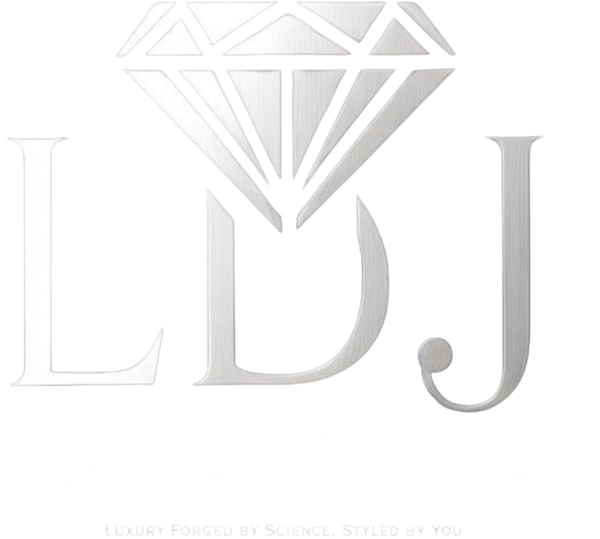Lab-grown diamonds are leading a new era in the jewelry market, where they are establishing a new identity of luxury. They are the same chemically as natural diamonds but come with an ethical, eco-friendly, and budget-friendly package. However, the question is, were are these diamonds actually fabricated?
The CVD and HPHT are the two technologies which are at the forefront of the industry. Although they are similar in that they both grow real diamonds, the CVD method is based on the deposition of gases while HPHT mimics the natural process of a diamond formation with heat and pressure. Each of the methods has its advantages and disadvantages in terms of clarity, color, and cost.
The aim of the author is to inform in detail the two methods and also assist you in selecting the most suitable one for your next fine jewelry.
What Are Lab-Grown Diamonds?
Lab-grown diamonds that are also known as man-made, cultured or engineered diamonds are made with scientific methods which replicate the Earth’s natural process of diamond formation.
However, they are still:
Of the same chemical composition: pure carbon.Feature the same hardness and brilliance as natural diamonds.They are evaluated by the same organizations: GIA, IGI, GRA, or GCAL.
These diamonds are not the same as the simulants such as moissanite or cubic zirconia—they are the real diamonds.
Benefits:

Lab-created diamonds are genuine, environmentally friendly, and ethically sourced gems that provide incredible worth. It has no difference in the visual aspect compared to the natural, but the price is reduced by up to 50%, hence the perfect choice for a custom design. Diamonds grown in labs have fewer inclusions, uniform quality, and certification from reliable labs such as GIA or IGI, a wise sustainable decision for today's consumers.
Method 1: The CVD Process (Chemical Vapor Deposition)

CVD is a novel and more accurate method of manufacturing diamonds, that people still choose to make jewelry using diamonds that have been grown by this technique.
How It Works:
- Diamond Seed: A tiny, thin diamond disk is placed inside a vacuum chamber that is sealed.
- Gas Injection: The chamber is replenished with gases that have a high concentration of carbon, commonly methane and hydrogen.
- Plasma Activation:The heated transformation of the gases via microwaves or lasers results in plasma.
- Carbon Deposition: The carbon atoms detach from the gases and they start to solidify on the seed which thus leads to the formation of diamond layer after layer.
Timeframe:
-
Grows a single diamond within 3 to 6 weeks, depending on the desired size and clarity..
Final Result:
-
Generates Type IIa diamonds which are the purest chemically and the rarest.
-
Perfect for making colorless, transparent, and high clarity diamonds
Pros:
-
Environmentally friendly and utilizes minimal energy
-
Metallic inclusions are less than with HPHT
-
Fine-tuning of diamond quality is possible
Method 2: The HPHT Process (High Pressure High Temperature)

HPHT is the original method of lab-grown diamonds, created in the 1950s by scientists to replicate the nutural diamond formation process that occurred deep inside the Earth's crust.
How It Works:
-
Diamond Seed & Carbon Source: A seed is placed in carbon (often graphite).
-
Extreme Conditions: A press applies pressure over 725,000 psi and temperatures of 1,300–1,600°C.
-
Crystal Growth: The carbon melts and begins to reform into a diamond around the seed.
Timeframe:
- Depending on the size, it can last from days to a few weeks.
Final Result:
-
Generally Type Ib or Type II diamonds can be formed..
-
The scientists take yellow, blue, and brown diamonds as examples of nitrogen or boron doping that they use for production.
Pros:
- Quick growth of bigger diamonds
- Production of some colored diamonds at a low cost
- Use for gems as well as industrial purposes is allowed
Lab Grown Diamonds Market

Lab-created diamonds are the future of contemporary jewelry—providing all the same properties of mined diamonds in terms of brilliance, hardness, and sparkle but without the ethical issues and expensive prices. Produced in high-tech facilities with the CVD or HPHT methods, these diamonds are absolutely real, have certificates, and are environmentally friendly.
Lab-grown diamonds are directly in line with the three customer needs of luxury, sustainability, and value. They are most suitable for engagement rings, hip-hop jewelry, and unique pieces that make a difference.
Final Thoughts: Science Meets Sparkle

Lab-grown diamonds have moved beyond merely being alternatives—they are the present and future of the fine jewelry industry. Both CVD (Chemical Vapor Deposition) and HPHT (High Pressure High Temperature) methods produce real, super beautiful diamonds that are chemically and visually indistinguishable from those obtained from the earth.
For those who want high clarity, colorless, and green diamonds, CVD is the best option.If you are interested in fancy colors or bigger stones at a more affordable price, HPHT might be the best choice.
Whichever way fits you best, lab-grown diamonds give you an unbeatable deal, morals, and fire—they'll be just the thing for the new generation of buyers, who not only want high quality but also are environment-friendly.
We at CustomDiamJewel, take utmost care to bring you the best in the world of both handcrafted, certified lab-grown diamond jewelry which is a reflection of your value and style.

